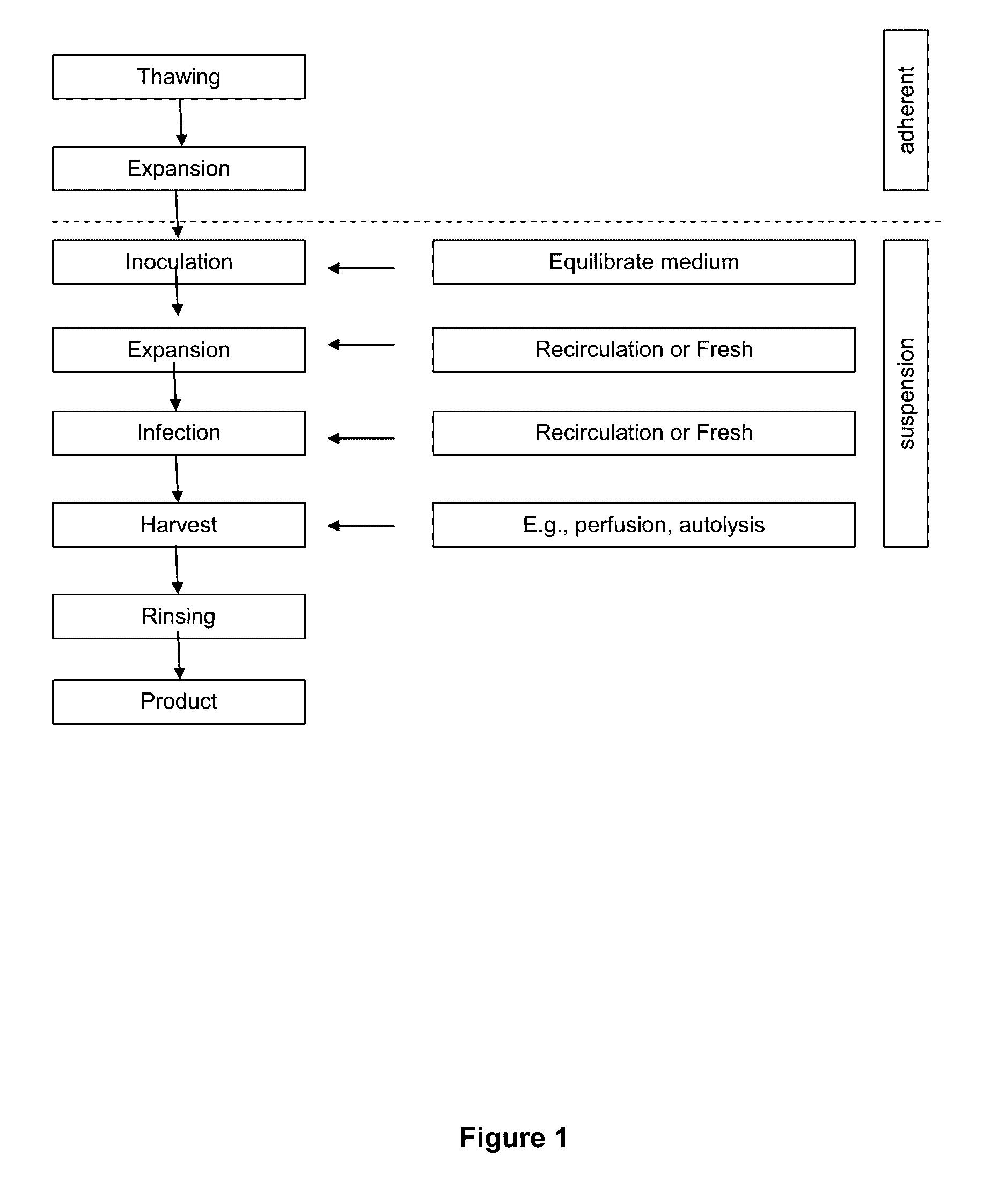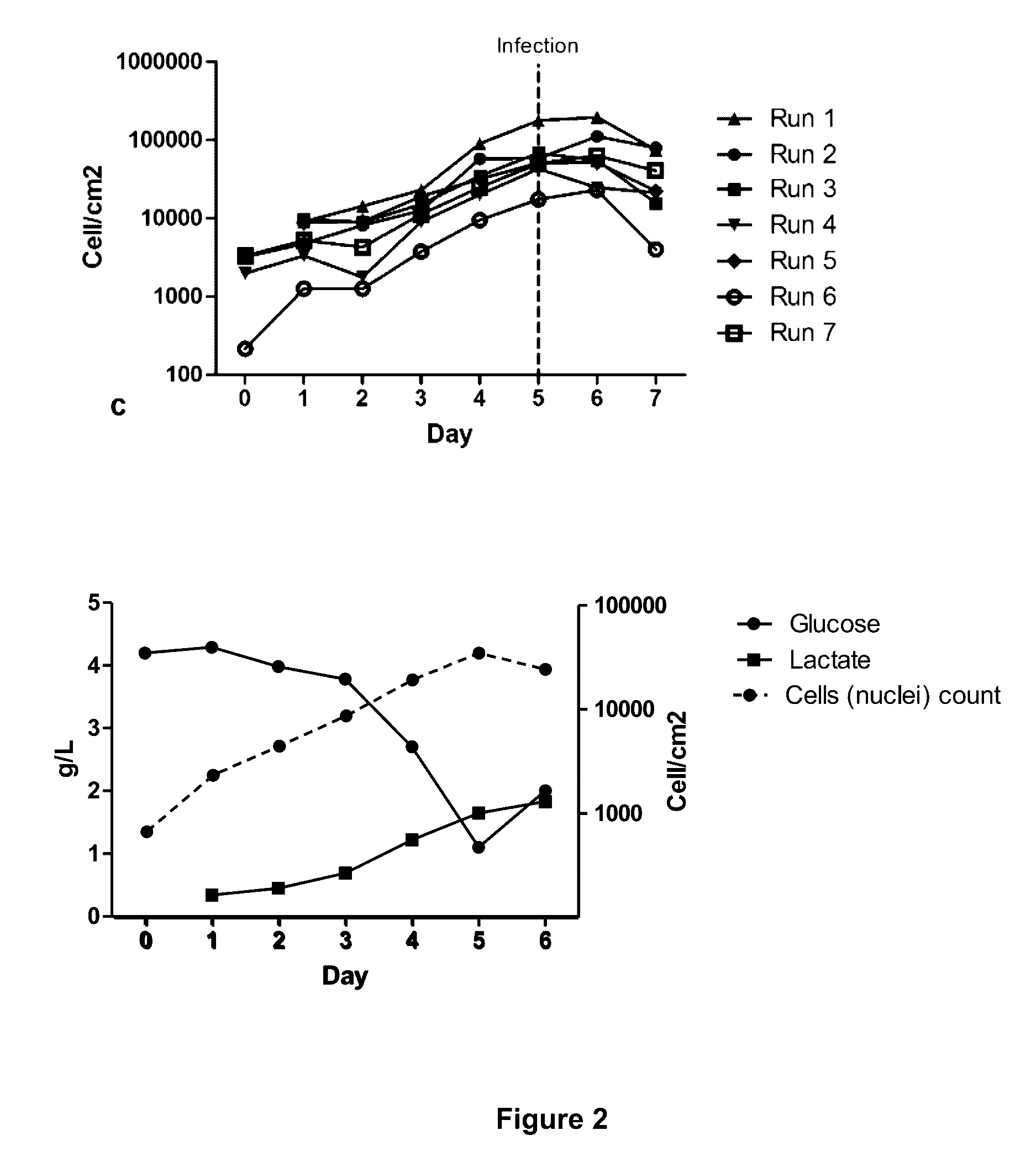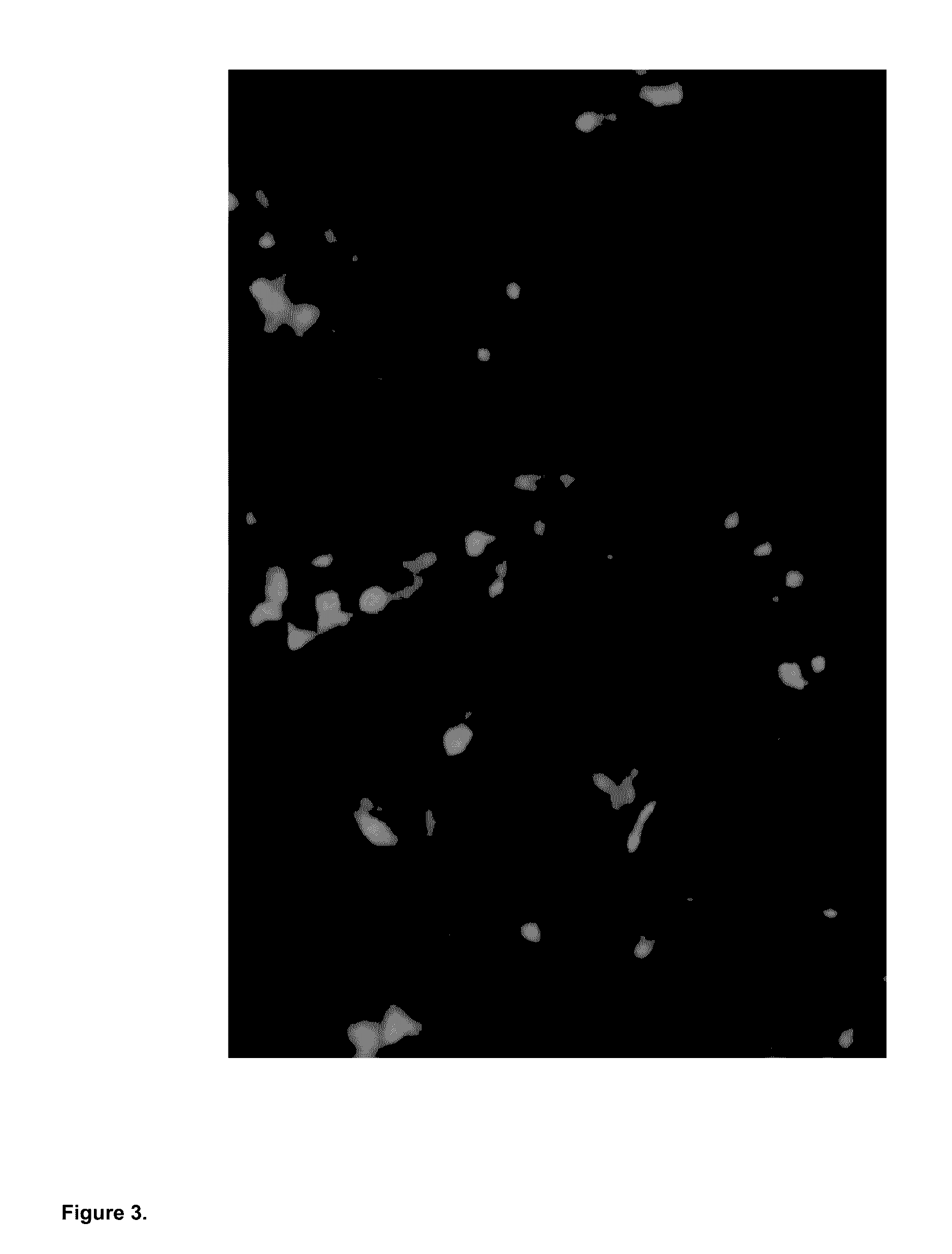Seeding An Adherent Cell Bioreactor With Non-Adherent Cells Increases Seeding Density Limit And Reduces Required Expansion Time
a technology of adherent cells and bioreactors, which is applied in the direction of viruses/bacteriophages, peptide/protein ingredients, and genetically modified cells, can solve the problems of using non-adherent suspension cells, and achieve the effect of reducing the amount of cells required for seeding and avoiding clogging of substrates or carriers
- Summary
- Abstract
- Description
- Claims
- Application Information
AI Technical Summary
Benefits of technology
Problems solved by technology
Method used
Image
Examples
examples
[0074]1. Producer Cell Line
[0075]In these experiments two commonly used cells lines, HEK293 and 293T cells were used as case examples. Adherent HEK293 or 293T cell lines were cultivated at 37° C. and 5% CO2 in cell culture flasks using Dulbecco's Modified Eagle Medium (Sigma-Aldrich) competed with 10% fetal bovine serum (FBS, Life Technologies), 2 mM L-glutamine (Invitrogen). Optionally, one can add 50 μg / ml / 50 IU / ml penicillin / streptomycin (Invitrogen). In suspension HEK293 or 293T cells were grown using EXCELL 293 serum-free medium (Sigma-Aldrich) containing 6 mM L-glutamine and 50 μg / ml penicillin / streptomycin. Other mediums, such as CD293 (Inviirogen), BHK (Merck Millipore), Ex-Cell GTM3 (Sigma-Aldrich), Freestyle (Invitrogen) and SFM293 (HyClone) have also been used for the growth of these cells in suspension. In the bioreactor, adherent cells were cultured using DMEM containing 10% FBS, 2 mM L-glutamine. We in fact used 50 μg / ml penicillin / streptomycin for this Experiment, but...
PUM
| Property | Measurement | Unit |
|---|---|---|
| area | aaaaa | aaaaa |
| concentration | aaaaa | aaaaa |
| volume | aaaaa | aaaaa |
Abstract
Description
Claims
Application Information
 Login to View More
Login to View More - R&D
- Intellectual Property
- Life Sciences
- Materials
- Tech Scout
- Unparalleled Data Quality
- Higher Quality Content
- 60% Fewer Hallucinations
Browse by: Latest US Patents, China's latest patents, Technical Efficacy Thesaurus, Application Domain, Technology Topic, Popular Technical Reports.
© 2025 PatSnap. All rights reserved.Legal|Privacy policy|Modern Slavery Act Transparency Statement|Sitemap|About US| Contact US: help@patsnap.com



